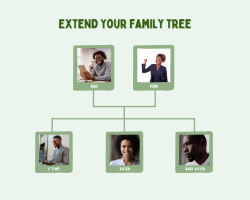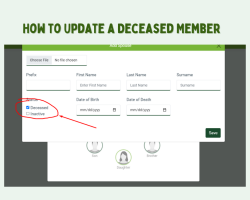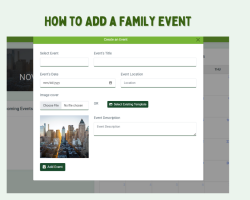The Baganda is one of the most famous tribes in Uganda. It’s part of the larger Bantu ethnic group, predominantly concentrated in Uganda’s central region, where the great Buganda kingdom was situated.
The Baganda are known for their sophisticated governance system and rich cultural traditions, and they played a pivotal role in shaping the history and development of Uganda.
Here’s an overview of the Baganda way of life.
Family Structure
Traditionally, the Buganda lived in households comprising nuclear families. And the family was the basic unit of the Buganda kinship system. The family comprised the father, mother, and children.
The father was the head of the family. He was respected, and no one was allowed to question his decisions.
Since the Baganda are a patrilineal society, relatives of the father who were unmarried or widowed sisters, grandparents, and other children from his clan lived together as a household.
Servants and their families were also considered part of the household. In all cases, the father remains the head of the family.
Co-wives lived in separate but adjacent houses while the husband had his own in front of the women’s homes.
Clans
The Baganda have a common ancestry and are organized into groups with a common culture. These groups are clans led by chiefs.
Traditionally, they were organized into five original clans, referred to as Banansangwa, comprising the Nyonyi, Nyaza, Ffumbe, Lugave, and Nyonge.
Later, other clans came up. The oldest clan traces its lineage to Bakiranze Kivebulaya, who ruled ten clans referred to as Nansangwa. It comprised of the following;
- Fumbe (Civet cat)
- Ngonge (Otter)
- Mmamba (Lungfish)
- Njovu (Elephant
- Ngeye (Colobus monkey)
- Njaza (Reedbuck)
- Lugave (Pangolin),
- Ennyange (Cattle egret)
- Mpindi (Cowpea
- Ngabi (bushbuck)
Another leader, Abalasangeye, formed Kintu, organized into thirteen clans. They include;
- Ngo (Leopard)
- Mbwa (Dog)
- Nkima (Vervet monkey)
- Mpeewo (Oribi antelope)
- Mpologoma (Lion)
- Namuŋoona (Pied crow)
- Ŋonge (Otter)
- Ekkobe (Liana fruit)
- Njovu (Elephant)
- Nvuma (Pearl)
- Nkejje (Cichlids)
- Ntalaganya (Blue duiker)
- Nvubu (Hippopotamus)
Additionally, a group led by Kabaka Kimera formed another eleven clans of the Baganda community. They include;
- Kasimba (Genet)
- Butiko (Mushrooms)
- Kayozi (Jerboa)
- Nseenene (Copiphorini)
- Musu/Omusu (Edible rat)
- Kibe (Fox)
- Mbogo (Buffalo)
- Bugeme (Bushbuck)
- Nsuma (snout fish)
- Nkerebwe (Jungle Shrew)
Totems
All clans among the Baganda people had totems that identified them. Most of the totems were animals, and it was taboo to eat them.
Some familiar totems are civet cat, anteater, otter, dog, cow, buffalo, bushbuck, sheep, leopard, crow, and elephant. Plants such as beans, yams, and mushrooms represent the clans.
Subgroups
As of now, Buganda has at least fifty-two clans within the kingdom. The clans have subgroups that reflect historical waves of immigration to Baganda. They include;
- Nansangwa
- Kintu migration
- Kato Kimera migration
Dialects
Traditional Buganda spoke Luganda as their language. The language is still the mother tongue of Baganda.
Age Sets
The age-set system was absent amongst Buganda. However, a person underwent various stages of their life until death. An individual had to pass through childhood (Omwana), become a youth (Omuvubuka), and finally become an adult, man(Omusajja)/ woman ( Omukazi). At death, one becomes a spirit (Omuzima).
Naming System
Naming among the Buganda community was important. Children are given names depending on their respective clans. People gathered at the clan chief’s house on the naming- day.
Mothers brought their children’s umbilical cords, and paternal grandmothers put them in cans containing beer, milk, and water. This was to ensure that the children were legitimate or not. A feast was then held, and the naming ceremony took place.
The paternal grandfather recites many names of dead clan ancestors, and if the child laughs, then the soul of the mentioned ancestor is said to have entered the baby’s body. The baby is, thus, named after the ancestor.
Marriage/Courtship
Traditionally, marriage was initiated and arranged marriage for their children. A father chose a husband for his daughter, and she had no say in the selection.
Old or young, she was expected to obey her father. It was common for older men to marry young girls to make them feel young.
However, as time passed, men could make their choices and, with the help of their families, processed to make formal arrangements for marriage.
A formal ceremony was later held after the introduction of both families and payment of bride price. At the ceremony, the girl was officially handed over for marriage. A feast was then held, and people danced and blessed the couple.
If the girl was a virgin, she would be escorted to her husband’s home with her aunt. If not, she went alone. The aunt’s purpose was to take bedding and a goat slaughtered and eaten without salt. Marriage from the same clan was prohibited except for the Ngabi and Mamba clans.
Polygamy
Marrying more than one wife was a sign of prestige among the Baganda. Consequently, polygamy became a norm for them. A man would marry up to five wives if he could meet their needs.
Gender Roles in Marriage
A man was a respected head of the household. Home members, including wives, knelt while speaking or giving food to them. He was required to provide for the family and ensure their security.
The woman took care of the household duties and the garden. She was expected to sire and raise children appropriately.
Widows and Widowers
The Baganda community traditionally practiced Levirate customs. The man who was the heir to the widow had the responsibility of adopting the widow’s family and making them his own. Widowers married again.
Divorce
Unlike in other societies of Uganda, divorce was common in the Buganda community.
Inheritance
Being a patrilineal society, only males were allowed to inherit wealth among the Baganda. In case a father died when his sons were young, the wealth was handed over to the brothers of the father till the sons were of age.
Death
The people of the Buganda people feared death. When a person died, the burial took place after five days. They believed the deceased might still contain the element of life and come back to life.
They would go to the extent of pinching a dead body to ascertain if it could feel the pain. They attributed all deaths to wizards, supernatural spirits, and sorcerers. Therefore when a person died, a witch doctor was consulted.
Mourning involved weeping and wailing and would take up to a month. Ten days after burial, they conducted funeral rites known as Okwabya Olumbe.
This was a ceremonial banquet whereby clan elders would be invited together with community members. It involved eating, drinking, dancing, and unrestrained sexual intercourse among members present.
An heir was also installed if the deceased was the head of the family. The rest of the family was required to shave off their hair to signify new beginnings.
Are you a Baganda?
Would you love to preserve your history? Sign up on the Oret website to create your family tree and a lasting legacy.
Share our Post







